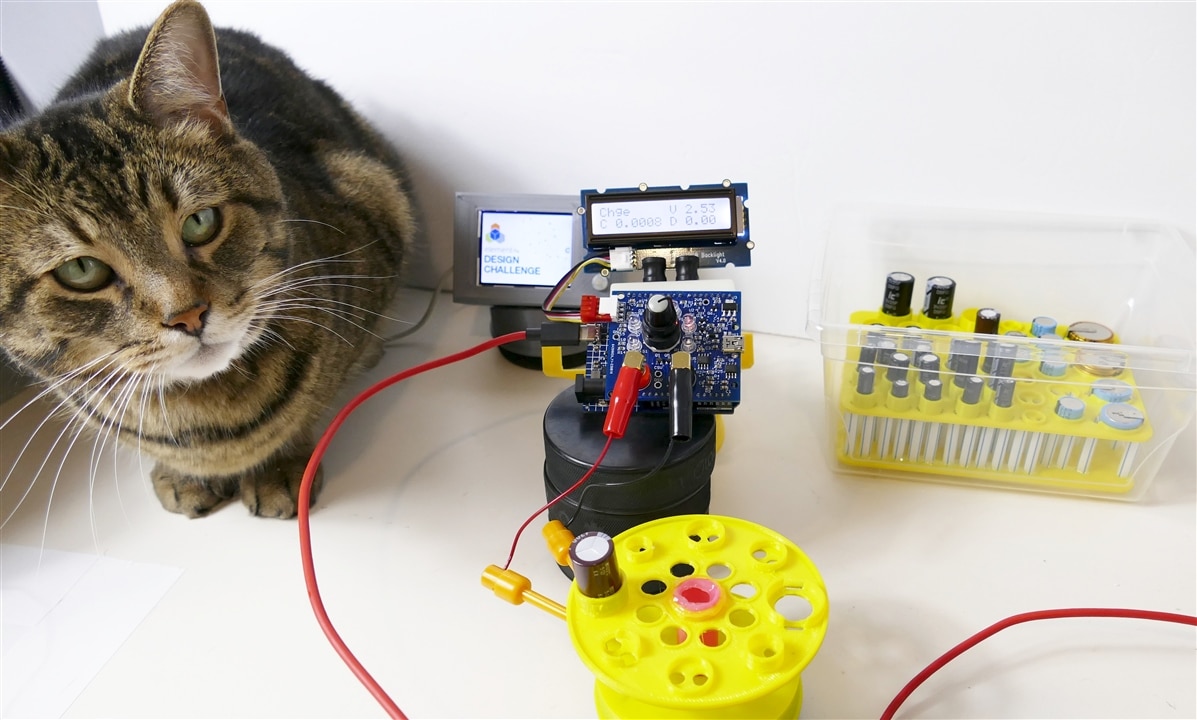Intro
This installment on my Super Capacitor Experimentation Project covers functional testing of the supercapacitor meter shield. The last blog covered assembly of the PCB. This blog shows the shield is able to charge and discharge with constant current under MCU control. The software for this installment does not implement the full capacitance meter function, it is aimed at proving all of the circuitry is fully functional and properly connected to the MCU. The test software also allows the circuitry to be calibrated.
Operational Description
The shield has 6 functions, selected by the rotary switch, these functions are displayed, but not fully implemented:
- Voltage Mode - displays capacitor-under-test voltage, used to monitor leakage
- LiC Mode - used to measure capacitance of Lithium Capacitors
- EDLC Mode - used to measure capacitance of EDL Capacitors
- ESR Mode - used to measure equivalent series resistance of capacitors
- Charge Mode - supplies constant charging current to the capacitor-under-test
- Discharge Mode - extracts constant discharging current from the capacitor-under-test
The functional test software can charge and discharge at constant current rates while monitoring capacitor voltage.

Functional Test Software Demo
The following video shows the shield and test software in action:
Discussion
The functional test is successful - all circuitry is working. The resistors and voltages have been calibrated and the currents are reasonably accurate - checked by measuring resistance and voltage at the shunt to calculate current. (Using a 4 digit DVM)
I discovered (the hard way) that the I2C pins are connected to 2 of the analog input pins, which means there are only 3 usable analog inputs. I am pretty disappointed about that situation, although I can get by with 3 analog inputs for this project by doing more manual calibration.
The functional test is the biggest hurdle in the project, so it is great to get past this stage.
Next Steps
Next I will design a case for the capacitance meter to make it look like a real meter and of course I have to finish programing the meter functions.
Links
The SuperCap Magic Meter Shield
SuperCap Meter Shield Functional Test
SuperCap Magic Meter - Operational
SuperCap Magic Meter - Experimenting with Supercapacitors
Experimenting with Supercapacitors Design Challenge
Cornell Dubilier Supercapacitor Technical Guide

